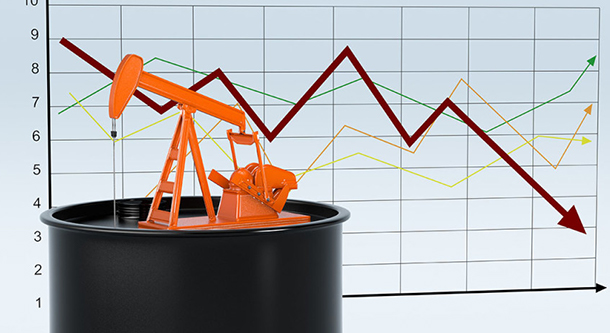
On the week, the national gas price average has dropped seven cents to land at $2.56. As pump prices steadily decline, they are headed toward some of the cheapest gas prices in 2018. The national average was lowest in January at $2.49 while May brought the most expensive price of $2.97.
“Trends are indicating that the month of December may bring some of the cheapest gas prices of the year,” said Jeanette Casselano, AAA spokesperson. “Currently, 19 states already have gas price averages less expensive than a year ago so as U.S. gasoline demand remains low and supply plentiful, motorists can expect to save at the pump as long as the price of crude oil doesn’t spike.”
Gas prices have been cheaper in the U.S. as crude oil sells at $57/bbl and cheaper – the lowest prices of the year. However, market observers warn crude could see an increase following the Organization of Petroleum Exporting Countries (OPEC) meeting on December 6 in Vienna, Austria. At that meeting, OPEC is expected to curtail crude production by 1 million to 1.4 million barrels per day, which could cause crude prices to rise due to reduced global supply, in turn causing gas prices to turn higher in America.

Quick Stats
- The nation’s top 10 largest weekly decreases are: Ohio (-14 cents), Kentucky (-11 cents), Mississippi (-11 cents), South Carolina (-10 cents), Michigan (-9 cents), Alabama (-9 cents), Arkansas (-9 cents), Georgia (-9 cents), Illinois (-9 cents) and Texas (-9 cents).
- The nation’s top 10 least expensive markets are: Missouri ($2.18), Oklahoma ($2.21), South Carolina ($2.23), Texas ($2.24), Delaware ($2.24), Louisiana ($2.26), Mississippi ($2.27), Alabama ($2.27), Kentucky ($2.27) and Ohio ($2.28).

Great Lakes and Central
The majority of the Great Lakes and Central states are carrying gas price averages cheaper than one year ago: Iowa (-20 cents), Indiana (-16 cents), Ohio (-15 cents), Michigan (-14 cents), Nebraska (-14 cents), Illinois (-11 cents), Missouri (-11 cents), Kentucky (-9 cents), Kansas (-7 cents), Wisconsin (-6 cents) and Minnesota (-2 cents). There are only 19 states in the country with less expensive year-over-year prices and 11 of those are in this region.
On the week, gas prices are as much as 14 cents cheaper in Ohio. Today, state gas price averages range from $2.58 in North Dakota to $2.18 in Missouri.
The week’s prior build in gasoline inventory for the region was cancelled out as stocks drew by nearly half a million according to the Energy Information Administration’s (EIA) latest data. Total stocks continue to register just above the 46 million bbl mark and year-over-year, inventory is at a 1.1 million bbl surplus. Despite the draw, regional utilization jumped seven percent to 91.4 percent indicating that stocks could build in the coming weeks and help to make prices even cheaper.
Mid-Atlantic and Northeast
Across the Mid-Atlantic and Northeast states, gas prices are cheaper on the week with Washington, D.C. seeing the smallest decrease (-2 cents) and Tennessee seeing the largest decrease (-8 cents). As pump prices continue to decline, all state averages remain well below the $3/gal mark – a vast change from this summer when Connecticut, New York, Pennsylvania and Washington, D.C. were routinely at this mark. These states continue to have the most expensive average in the region, but are still at least 15-cents under the $3/gal mark: Connecticut ($2.84), New York ($2.83) and Washington, D.C. ($2.82)
This week, Delaware ($2.24), Maryland ($2.42) and Pennsylvania ($2.76) have state gas price averages cheaper than one year ago with a year-over-year difference of 18, five and one cent respectively.
Gasoline stocks dramatically declined by nearly 3 million bbl on the week to drop stocks to a total of 61.7 million bbl. EIA data shows that stock levels have not been this low since April of this year. The large draw in stocks kept state gas price averages from seeing large declines this week.
South and Southeast
There are five states in the South and Southeast region landing on the Top 10 list of largest weekly declines: Mississippi (-11 cents), South Carolina (-10 cents), Alabama (-9 cents), Arkansas (-9 cents) and Texas (-9 cents). With a seven-cent drop, Florida and North Carolina saw the smallest decreases in the region.
Currently, five states in the region are enjoying pump prices that are cheaper year-over-year: Oklahoma (-7 cents), Louisiana (-6 cents), Florida (-4 cents), Texas (-3 cents) and South Carolina (-1 cent).
Refinery utilization in the South and Southeast increased two percent as stocks built by nearly 2 million bbl on the week, according to EIA data. Total stocks sit at 83.7 million bbl, a level not seen for the region since the end of June. The large increase in stocks contributed to the large decreases in gas prices this past week.

West Coast
Motorists in the West Coast region continue to pay some of the highest pump prices in the nation, with six of the region’s states landing on the nation’s top 10 most expensive list. Hawaii ($3.76) is the nation’s most expensive market, followed by California ($3.61), Washington ($3.36), Alaska ($3.27), Nevada ($3.20), Oregon ($3.18), and Arizona ($2.84). On the week, all prices in the region are lower. Hawaii (-8 cents), Washington (-5 cents) and California (-4 cents) saw the largest drops.
The EIA’s weekly petroleum status report for the week ending on November 16, showed West Coast gasoline stocks increased by 300,000 bbl to 26.9 million bbl. Stocks are approximately 1.3 million bbl lower than at this time last year, which could cause prices to spike if there is a supply challenge in the region this week.
Rockies
For the first time since April, Idaho’s gas price average drops below $3/gal to $2.97. While all states are selling below the $3/gal mark, four continue to carry among the most expensive averages in the country: Idaho ($2.97), Utah ($2.91), Montana ($2.86) and Wyoming ($2.86). On the week gas prices decreased as much as six cents in Colorado, five cents in Idaho, and as little as two cents in Wyoming.
With a draw of 130,000 bbl, stocks in the Rockies region fell to 6.8 million bbl. Coincidentally, stocks sit at a 130,000 bbl year-over-year surplus. Refinery utilization declined as well, according to the latest EIA data.
Oil market dynamics
At the close of Friday’s formal trading session on the NYMEX, WTI dropped $4.21 and settled at $50.42. Oil prices plunged to their lowest point since October 2017 last week as EIA reported that crude inventories continue to build. The latest EIA weekly petroleum report showed that crude inventories grew by 4.9 million bbl to 447 million bbl. Total domestic crude inventories have grown for nine consecutive weeks, contributing to the crude prices dropping further. If this week’s EIA report shows another build, crude prices will likely continue their descent.
Growth in global crude production, including in the U.S., combined with weaker than expected global crude demand for the fourth quarter of 2018 have contributed to growth in global crude inventories. Market observers will now watch OPEC closely, which may decide to reduce its total crude production at its meeting next month. If OPEC, along with Russia, decides to reduce production, crude prices will likely increase due to the agreement.
Motorists can find current gas prices along their route with the free AAA Mobile app for iPhone, iPad and Android. The app can also be used to map a route, find discounts, book a hotel and access AAA roadside assistance. Learn more at AAA.com/mobile.
